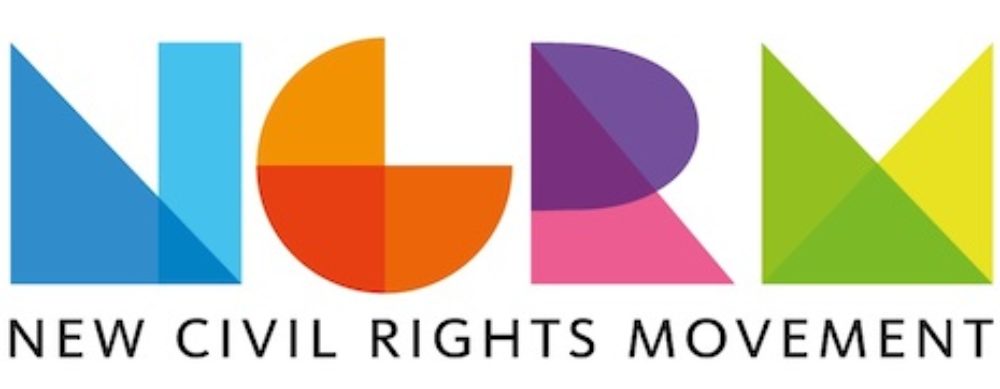Previewing Prop 8 And DOMA: Part I — The Amicus Briefs
As you almost surely know, the Supreme Court will shortly hear oral arguments on two cases of monumental importance to the LGBT rights movement: Windsor v. United States (the Defense of Marriage Act case) and Hollingsworth v. Perry (the Proposition 8 case, which has undergone more name changes than Prince). By the conclusion of oral arguments on March 27, we might have a pretty good idea of which way the Justices are leaning on these cases. A decision is expected by late June. As we approach that date, I’ll be writing a series of columns explaining the legal issues from several different perspectives. (You can let me know in the comments if there’s any particular question you’d like to see explored or answered.)
//
Let’s start with an issue that might not occur to you right away: amicus briefs.  The two cases have spawned an almost unfathomable number of these amicus briefs – I counted at least 80 such briefs in the Prop 8 case, and more than 40 for DOMA (with more coming in….). My guess is that this is some kind of all-time record. So, what is an amicus brief? And do they matter?
The full name of these documents is amicus curiae, Latin for “friend of the court.†They are written to provide the court with a perspective that might otherwise be missing. In the case of marriage equality, amici (the plural of “amicus,†for you non-Latin scholars) have supplied an avalanche of such perspectives: in addition to additional legal lenses not fully developed by the parties, these include (at least) sociology; biology; philosophy; politics; religion; public health; and psychology. Of course, for each of these perspectives there are, in turn, oodles (a technical term) of viewpoints, and the amicus writers seem to have expressed almost all of them. The American Bar Association has collected them all here and here.
It’s not surprising that these cases have generated so many thoughtful responses from different communities. Marriage equality is a hugely important issue all by itself, of course, but the debate also feeds into broader questions about the state of marriage more generally, and from there into still wider issues about the kind of society we want to have and to encourage.
Let’s look at three concrete examples, for context. A brief by the American Psychological Association, the American Medical Association, and other reputable professional organizations argues for marriage equality based on the accumulating pile of evidence showing that: same-sex attractions are normal expressions of human sexuality; same-sex couples form the attachments and commitments at the same depth as our heterosexual counterparts,; and kids thrive in families headed up by same-sex couples. On the other side is a brief by Princeton Professor Robert George and colleagues, which argues that extending marriage to same-sex couples will destabilize both the definition of marriage and the institution itself. The brief is a kind of hodgepodge of neo-natural law, bad social science, and raw speculation about negative long-term consequence if the same-sex marriage beast is released from its shackles.
And then there’s one of my favorites, by Dr. Maria Nieto, who is a biologist in the Cal State system. She points out that our commitment to the “two-sex only†model that supports the exclusion of same-sex couples from marriage isn’t consistent with the complex biological reality that “a not insignificant†percentage of the population expresses sex and gender in ways that don’t fit into this binary system; mostly, she’s talking about intersexed people, who may have physical and hormonal characteristics that place them somewhere between the male-female poles.
Well, this is all very interesting. (I mean, it really is! Read some of them if you have some time. You’ll learn lessons that extend far beyond the current controversy.) But, again, do any of these briefs matter?
There’s some reason to think they have mattered, in some cases. The Court considered them in some of the criminal procedure cases, for example. And occasionally such briefs are cited by the Supreme Court or by lower federal courts, a sign that they might have had at least some influence on the decision. To speak (ahem) about my own involvement for a moment: The federal court of appeals in Windsor cited an amicus brief by Family Law professors (including me!) in which we pointed out that DOMA is the first time that Congress butted in to the state law issue of who’s married, and who isn’t, by defining marriage as limited to the union of a man and a woman. (As you probably know, DOMA means that even if you’re married under your state’s law, your union doesn’t count for federal purposes.) Update: I just found this statement from former Justice O’Connor, taken from last night’s appearance on The Rachel Maddow Show (and thanks to David Badash for alerting me to this):
If [an amicus brief] gives you an intelligent look at the legal  issues, then it might be of some value to you, as a Justice.
And she said she read them! Whether they’ll affect the Justices’ thinking in these cases is anyone’s guess, though. If it’s true that it’s all up to Justice Kennedy, then perhaps he’s sitting up nights, briefs stacked on a table next to his chair, reading through the thick pile of verbiage in an attempt to gain wisdom about what to do. Let’s hope so, as the arguments for striking down these laws are much stronger than those on the other side. Reading the 120+ amicus briefs (not to mention those filed by the actual parties to the case) would doubtless only strengthen that conviction.
John Culhane is the co-author of the new book, Same-Sex Legal Kit for Dummies. He is a law professor who writes about various and sundry topics, including: disaster compensation; tort law; public health law; literature; science; sports; his own personal life (when he can bear the humanity); and, especially, LGBT rights and issues. He teaches at the Widener University School of Law, and is also a contributing writer for Slate.
Â
Â

Enjoy this piece?
… then let us make a small request. The New Civil Rights Movement depends on readers like you to meet our ongoing expenses and continue producing quality progressive journalism. Three Silicon Valley giants consume 70 percent of all online advertising dollars, so we need your help to continue doing what we do.
NCRM is independent. You won’t find mainstream media bias here. From unflinching coverage of religious extremism, to spotlighting efforts to roll back our rights, NCRM continues to speak truth to power. America needs independent voices like NCRM to be sure no one is forgotten.
Every reader contribution, whatever the amount, makes a tremendous difference. Help ensure NCRM remains independent long into the future. Support progressive journalism with a one-time contribution to NCRM, or click here to become a subscriber. Thank you. Click here to donate by check.
 |






















